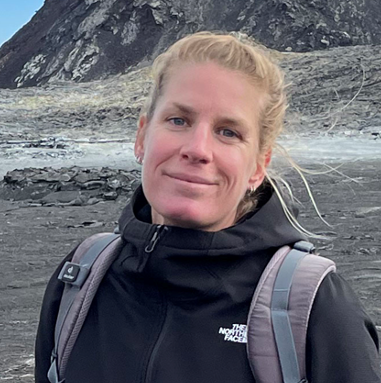As we still race through the volcanic regions of central France, we bring some more sparks. We hope the peloton will do likewise.
As we said: volcanoes and sparks. The lava rock won’t be hot under the wheels, but geologically, the lava flowed and sparked in the landscape not that long ago. Some of the volcanic cones that form the ‘Chaine des Puys’ are only 7.000 years old. The much larger dormant but explosive stratovolcano Mont Dore is ‘only’ one to three million years old. From the bike the riders will spot a volcanic cone here and there in the landscape on the climb to Mont Doré. The Puy de Sancy east of Mont Doré is the highest volcano in the Massif Central at 1885m.

A spectacle
During the Quaternary which started roughly 2,5 million years ago (and still ongoing) this part of France was the scene of violent volcanic eruptions. They were witnessed by prehistoric people in the Holocene. The type of volcanism they were dealing with is similar to that in Iceland or that of the Etna volcano in Italy. It was sometimes ‘effusive’ with lava fountains of basaltic composition producing slow flowing rivers of molten rock. But sometimes it was also explosive with huge ash clouds that end up high in the atmosphere. ‘Pyroclastic’ streams hurtle down the mountain like a hot mass of ash and rock with all the consequences that entails. More on this on stage 9.


Left: Explosive eruption of Mount Etna 2018 (http://www.abc.net.au/news/2018-12-27/mt-etna-eruptions-trigger-earthquake-in-sicily/106693). Right: Effusive volcanism on the Etna (By Salvo Orlando, http://www.sicilylandscape.com
A stratovolcano like Mont Dore is a cone-shaped volcano made up of ash, lava flows and pyroclastic deposits. Because this volcano is a bit older, weathering and erosion processes have already rounded off the mountain. It no longer looks as typical as a volcano like Etna.
Geochemistry research
At the Vrije Universiteit Amsterdam we conduct research into the composition of volcanic rocks in order to better understand how a volcano works. A volcano is actually our only access to the rock under the earth’s crust on which we live, the mantle. That rock melts and rises up in the volcano. The exchange of rock and also gasses such as CO2 between the mantle and the atmosphere as a result of volcanism is important for our living environment and climate. Volcanoes show us that that exchange varies depending on where the volcano is located relative to the tectonic plates. There are still a lot of volcanoes that need to be geochemically investigated!
Pioneer: Katia Krafft
As mentioned in the blog at Stage 1, Katia Krafft was a pioneer geochemist and volcano admirer. With her passion to observe volcanoes, she literally gave her life for science and society.

Katia was French and born in the Rhine Valley of the Alsace in 1942. Her passion and insight into the possible impact of volcanoes on society led her to increasingly exchange her research work for outreach projects. Together with her husband she made impossible trips to record the volcanic spectacle and thus communicate the usefulness but also the danger of volcanoes to the population. Katia’s work has cleared areas around active volcanoes and saved lives (for example, the 1991 Pinatubo eruption in the Philippines). Unfortunately, she and her husband died in a pyroclastic ash cloud during the eruption of the explosive Unzen volcano in Japan in 1991.
The eruption of the volcanoes in the central massif may have also killed prehistoric people. Like Katia they wanted to see the volcanic spectacle from a little too close. Fortunately, an eruption of one of the French volcanoes during the Tour stage to Mauriac will not happen. The women’s peloton will have to add the sparks themselves!





